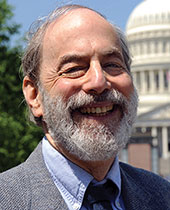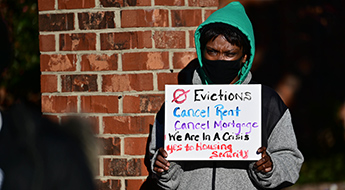James Rosenbaum
Professor of Education and Social Policy | Professor of Sociology (by courtesy)
PhD, Sociology, Harvard University, 1973
Education researcher James Rosenbaum's current major area of research concerns the college-for-all movement, college attendance and coaches, high-school-to-work transitions, and linkages among students, schools, and employers.
For two decades, he conducted an extensive research project on the effects of relocating poor inner-city black families in public housing to subsidized housing in the white middle-class suburbs of Chicago. This quasi-natural experiment, known as the Gautreaux Program, has enabled him to study the effects of these moves on children's educational outcomes and job opportunities, as well as the social and economic effects on the mothers. These studies encouraged the federal government to create its Moving to Opportunity (MTO) program, implemented by the U.S. Department of Housing and Urban Development. A specialist in research on work, education, and housing opportunities, Rosenbaum has published six books and numerous articles on these subjects.
Rosenbaum has testified before Congressional committees on several occasions. He is a member of the Technical Review Panel for the High School Longitudinal Study of 2009 (HSLS:09) in the U.S. Department of Education. Rosenbaum's research has contributed to the design of award-winning community college reforms, federal and state policies, and programs to improve college access for low-income students.
Current Research
How Can College Be for All? While the nation’s high schools have embraced the idea of trying to get all high school seniors into college, little attention has been paid to the processes that increase the number of students who actually go and complete their degree. Rosenbaum’s research team is conducting a longitudinal study of all seniors at 82 public high schools in Chicago, seeking to extend understanding of the varied institutional procedures that shape the high-school-to-college transition process for students. Using data generated by the Consortium on Chicago School Research, it is possible to model trajectories from sixth grade through the year following high school, using postsecondary enrollment information from the National Student Clearinghouse. Results will be used to determine the effectiveness of guidance programs and provide school administrators and guidance counselors with highly relevant information about how to help their students make the transition to college.
College Attendance and "Coaches." Since 2005, Rosenbaum has been gathering ethnographic and administrative data from a new college counseling program in Chicago public schools that targets disadvantaged students, many of whom are the first in their families to attend college. Beyond cost and academic achievement, previous research finds that these students have a lack of college-related social capital. The program helps students overcome these cultural barriers by pairing them with “college coaches,” who advise them on their options for college, demonstrate how to work with admissions counselors, and assist with scholarship applications. Following nearly all Chicago public school seniors through the fall after high school, Rosenbaum and Jennifer Stephan of the American Institutes for Research find that coaches improve the types of colleges students attend by getting students to complete key actions, with the most disadvantaged students benefiting the most, suggesting that targeting social capital might improve the high-school-to-college transition for these students. This idea is being implemented in other school systems across the country
Employers and Community Colleges. This project looks at the hiring process from the vantage points of both employers and educators. Rosenbaum focuses on two questions: How do employers view community colleges? Which programs help students complete their degrees and get earnings benefits when they graduate? The researchers are interviewing administrators and staff at 12 urban and suburban schools to determine how the schools prepare students for various occupations and how they learn about employers’ needs, disseminate information to firms, and help their graduates get jobs. Data from 1,200 students will shed light on their education and work training, and their career expectations. Local employers will be asked how they get information about school programs, how they decide whether these programs meet their needs, and whether they influence curricula. Employers’ views of programs including distance-education and use of the Internet also will be sought.
The High-School-to-Work Transition. From a sample of 500 U.S. high schools, Rosenbaum is pinpointing various links between school and work and their impact on employers, teachers, and students, especially low-income and minority youth. His research team is also interviewing school personnel and students in 12 high schools with different types of linkages to employers. They are analyzing reform experiments that use these arrangements to improve the motivation of work-bound students.
Selected Publications
Books
Bridging the Gaps: College Pathways to Career Success with Caitlin Ahearn and Janet Rosenbaum. New York: Russell Sage Foundation (2017).
After Admission: From College Access to College Success with Regina Deil-Amen. New York: Russell Sage Foundation (2006).
Beyond College for All: Career Paths for the Forgotten Half. New York: Russell Sage Foundation (2001).
Crossing the Class and Color Lines: From Public Housing to White Suburbia (pdf) with Leonard Rubinowitz. University of Chicago Press (2000).
Published Articles
Ilic, G., J. Rosenbaum, I. Matthies, and L. Meissner. 2020. The college counseling dilemma: Information and/or advice? Phi Delta Kappan 102(2): 40–3.
Rosenbaum, J. 2019. Adding value beyond the gold standard: Uses of mixed methods. Teachers College Record 121(10): A50.
Ilic, G. and J. Rosenbaum. 2019. Going all in on college counseling: Successes and trade-offs. Phi Delta Kappan 101(2): 42–5.
Mokher, C., J. Rosenbaum, A. Gable, C. Ahearn, and L. Jacobson. 2018. Ready for what? Confusion around college and career readiness. Phi Delta Kappan 100(4): 40–3.
Ng, C. and J. Rosenbaum. 2018. What competencies do sub-baccalaureate degrees teach? Retrospective reports from college graduates. Community College Journal of Research and Practice 42(5): 350–61.
Rosenbaum, J., C. Ahearn, and J. Lansing. 2018. College-for-All: Alternative options and procedures. In Handbook of the Sociology of Education in the 21st Century, ed. B. Schneider (Springer International Publishing).
Lansing, J., C. Ahearn, J. Rosenbaum, C. Mokher, and L. Jacobson. 2017. Improving high school-college alignment: A sociological reform and new challenges. Educational Forum 81(3): 267–80.
Rosenbaum, J. [James], C. Ahearn, J. Rosenbaum [Janet], and K. Becker. 2016. Beyond earnings and social reproduction: Can college lead to good jobs without reproducing social inequalities? The Russell Sage Foundation Journal of the Social Sciences 2(1): 90–110.
Rosenbaum, J. [James], C. Ahearn, and J. Rosenbaum [Janet]. 2016. The community college option. Education Leadership 73(6): 48–53.
Ahearn, C., J. Rosenbaum [James], and J. Rosenbaum [Janet]. 2016. The new college-for-all policy: What educators need to know about community college credentials. Phi Delta Kappan 97(5): 49–53.
Rosenbaum, J., K. Becker, K. Cepa, and C. Zapata-Gietl. 2015. Turning the question around: Do colleges fail to meet students' expectations? Research in Higher Education 57: 519–43.


